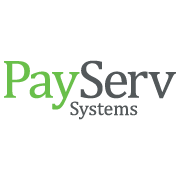Temp agencie’s payroll can be extremely complicated. Temporary employees need to be paid by the temp agency. The temp agency needs to invoice the companies for the work their employees did. On top of that, there are taxes and regulations to stay compliant with. A payroll software system should be able to handle all of that and more.
Matchr’s Top Pick

Paycor HCM
By PaycorPaycor’s intuitive, cloud-based software enables the management of all aspects of human resources, timekeeping, and payroll processing. It consists of cloud-based modules that can read more.

WorkforceTHRIVE HCM
By PayservWorkforce THRIVE HCM helps with the management of your Human Capital Management. . WorkforceThrive operates from a single, cloud-based database that brings Human Resources, Payroll read more.
Invoicing
Temp agencies should be able to track and issue invoices from their payroll software system. With the data from the invoices readily available for the payroll process, the payroll software can keep accurate track of money coming in and going out. The payroll software system can also generate records and insights that can help temp agencies make financial decisions and improve processes.
Different Payment Methods
Direct deposit is one of the most common methods of payment for employees. However, not everyone prefers or is able to use direct deposit. For this reason, a temp agency’s payroll software should be able to accommodate a variety of different payment methods, including but not limited to direct deposit. E-checks, physical checks, and payment cards are all options that the payroll system should be able to process.
Compliance Management
A temp agency may have employees working for different companies in a variety of different locations, even across state lines. A payroll system designed for temp agencies and temporary employees should help maintain compliance with all local, state, and federal laws and regulations regarding payroll, taxes, and employment.
Time and Attendance Tracking
If temporary employees are paid hourly, a temp agency will need to know exactly when they worked in order to accurately process payroll. Time and attendance tracking features within the payroll software can help to ensure accurate payroll for each employee, no matter where they’re currently working.
Mobile Application
With so many temporary employees actually going in to work outside of the temp agency’s own location, mobile applications are a must. Employees need to be able to track the time and attendance via a mobile app. They may also need to view their paystubs and information while not at the temp agency’s location. A mobile app can help to ensure that temporary employees working with other companies are still connected to the temp agency.
Employee Self-Service
An employee self-service portal can help temp agencies save a lot of time when it comes to managing employee data. It’s a lot faster for employees to manage their own information through a portal designed for their access to the payroll system. Employees can also view paystubs and upcoming paychecks in an employee self-service portal.
Compensation Management and Withholdings
A payroll system for a temp agency should be able to automatically calculate any amount that should be withheld from an employee’s paycheck. This includes normal tax withholdings. Some employees may have garnishments that also need to be withheld. A payroll system should be able to calculate any withholdings as well as other forms of compensation, such as benefits, bonuses, and more, that an employee may earn.
Looking for payroll solutions for a specific industry?










